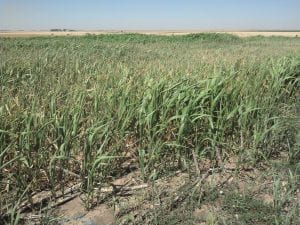by Zach Duncan, doctoral student and Dale Blasi, stocker, forages, nutrition and management specialist
Previous research conducted at the KSU Beef Stocker Unit with limit fed high-energy corn and corn co-products has established that feed efficiency is improved with a reduction in manure production in growing calves. One aspect of limit-feeding growing calves is the concern of insuring that sufficient bunk space is available to allow all calves the opportunity to gain access to feed when offered. Continue reading “Bunk space requirements for limit-fed growing beef cattle are not as large as initially thought”
 As the forage in our pastures becomes more brown than green in appearance it is not uncommon to notice a few thin cows within the herd. As forage quality declines in late Summer/Fall it can be difficult for some cows to maintain body condition, especially young cows (first or second calf) or those with relatively high lactation potential. However, the best time to improve cow body condition on Spring-calving cows is post-weaning during the Fall.
As the forage in our pastures becomes more brown than green in appearance it is not uncommon to notice a few thin cows within the herd. As forage quality declines in late Summer/Fall it can be difficult for some cows to maintain body condition, especially young cows (first or second calf) or those with relatively high lactation potential. However, the best time to improve cow body condition on Spring-calving cows is post-weaning during the Fall.  Many Kansas cattle operations rely on some type of harvested feed to use in the winter months and common among those sources is forage sorghum, sorghum-sudangrass and sudan. Forages in the sorghum family are prone to two different problems for feeding cattle, nitrate poisoning and prussic acid (hydrocyanic acid, HCN) poisoning. They are easy to get confused because both result in a lack of oxygen availability to the animal and are more likely to occur when the plant is stressed (fertility, hail, drought).
Many Kansas cattle operations rely on some type of harvested feed to use in the winter months and common among those sources is forage sorghum, sorghum-sudangrass and sudan. Forages in the sorghum family are prone to two different problems for feeding cattle, nitrate poisoning and prussic acid (hydrocyanic acid, HCN) poisoning. They are easy to get confused because both result in a lack of oxygen availability to the animal and are more likely to occur when the plant is stressed (fertility, hail, drought).